#Alessandro VII
Explore tagged Tumblr posts
Text
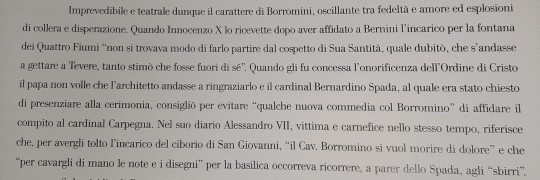
Paolo Portoghesi, Borromini La vita e le opere
#dicono di francesco#Francesco Castelli dramaqueening in Rome since 1620s#francesco borromini#borromini#padre spada is not paid enough for this#🕊️#Alessandro VII not welcome#bernini#baroque architecture
1 note
·
View note
Text
THIS DAY IN GAY HISTORY
based on: The White Crane Institute's 'Gay Wisdom', Gay Birthdays, Gay For Today, Famous GLBT, glbt-Gay Encylopedia, Today in Gay History, Wikipedia, and more … November 17



Andrea Doria as Neptune
1503 – Agnolo Bronzino (d.1572) was one of the leading painters of the Florentine School in mid-sixteenth-century Italy. He eventually became court painter to Cosimo de Medici. Born in Monticelli in 1503, Bronzino studied with mannerist painter and portraitist Jacopo Pontormo (1494-1557).
Most scholars conclude, based on a series of sonnets Bronzino wrote upon Pontormo's death, that the two men enjoyed a more intimate relationship than that of master and pupil. Later in his life, in 1552, Bronzino also adopted one of his own pupils, Alessandro Allori (1535-1607), as his son. In sixteenth-century Florence, this type of arrangement often signaled a sexual relationship between two men; an older man adopting his younger lover was quite common. The two artists lived together until Bronzino's death in 1572.
Famous mainly for his portraits, Bronzino also painted biblical and mythological scenes, designed tapestries and frescos, and composed poetry. While some of Bronzino's poetry consists of rather conventional lyric verse, as well as the sonnets upon Pontormo's death, he also wrote a considerable body of burlesque verse. Often obscene and erotic, burlesque verse circulated among Florentine intellectual and aristocratic circles, whose members would have detected obscure allusions and subtexts beneath the bawdy wordplay. Bronzino's burlesque poetry is distinguished by its large number of homoerotic references and allusions.

Cosimo I de' Medici as St. Sebastian
There is an undeniable homoerotic subtext to several of Bronzino's famous portraits, including Andrea Doria as Neptune (ca 1545) and Cosimo I de' Medici as St. Sebastian (ca 1538-1540).
In both his writing and painting, Bronzino contributes significant insights into same-sex desire and relationships in sixteenth-century Florentine society.


1851 – Major Lord Henry Arthur Somerset (d.1926) was the third son of the 8th Duke of Beaufort and his wife, the former Lady Georgiana Curzon. He was head of the stables of the future King Edward VII (then Prince of Wales) and a Major in the Royal Horse Guards.
He was linked with the Cleveland Street scandal, wherein he was identified and named by several male prostitutes as a customer of their services. He was interviewed by police on 7 August 1889; although the record of the interview has not survived, it resulted in a report being made by the Attorney-General, Solicitor-General and Director of Prosecutions urging that proceedings should be taken against him under section 11 of the Criminal Law Amendment Act 1885. A piece of paper was pasted over Somerset's name in the report, as it was deemed so sensitive.
However, the Director was told that the Home Secretary wished him to take no action for the moment. The police obtained a further statement implicating Somerset, while Somerset arranged for his solicitor to act in the defence of the boys arrested over the scandal. After the police saw him for a second time on 22 August, Somerset obtained leave from his regiment and permission to go abroad.
Lord Arthur went to Homburg, although he returned to England. When tipped off in September that charges were imminent, he fled to France to avoid them. From there he travelled through Constantinople, Budapest, Vienna, and then back to France, where he settled and died in 1926, aged 74.


1854 – Louis-Hubert Lyautey (d.1934) was a French Army general and colonial administrator. After serving in Indochina and Madagascar, he became the first French Resident-General in Morocco from 1912 to 1925. Early in 1917 he served briefly as Minister of War. From 1921 he was a Marshal of France. He was dubbed the Maker of Morocco and the French empire builder, and in 1931 made the cover of Time.
Lyautey was born in Nancy, capital of Lorraine. His father was a prosperous engineer, his grandfather a highly decorated Napoleonic general. His mother was a Norman aristocrat, and Lyautey inherited many of her assumptions: monarchism, patriotism, Catholicism and belief in the moral and political importance of the elite.
As Resident-General of Morocco from 1912 he was publicly deferential to the sultan and told his men not to treat the Moroccans as a conquered people. It was he who governed Morocco for the French, developed its economy, extended its borders, and pacified native resistance. During WWI, even with diminished troops, Lyautey maintained an iron rule over this French protectorate.
During his administration, inadvertently, perhaps, Morocco became a place of refuge for homosexuals from all over Europe who came to sample the delights of the native population. Lyautey is one of the many real life homosexuals who people Roger Peyrefitte’s novel, The Exile of Capri.


1887 – Field Marshal Bernard Law Montgomery, 1st Viscount Montgomery of Alamein, KG, GCB, DSO, PC (d.1976). Often referred to as "Monty", he was an Anglo-Irish British Army officer who successfully commanded Allied forces at the Battle of El Alamein, a major turning point in the Western Desert Campaign during World War II, and troops under his command played a major role in the expulsion of Axis forces from North Africa. He was later a prominent commander in Italy and North-West Europe, where he was in command of all Allied ground forces during Operation Overlord until after the Battle of Normandy.
After retirement the outspoken views of the best known general of the Second World War became public and his reputation suffered. He supported apartheid and Chinese communism under Mao Zedong, and spoke against the legalisation of homosexuality in the United Kingdom, arguing that the Sexual Offences Act 1967 was a "charter for buggery" and that "this sort of thing may be tolerated by the French, but we're British - thank God."
However, several of Montgomery's biographers, including Chalfont (who found something "disturbingly equivocal" in "his relations with boys and young men" and Nigel Hamilton have suggested that he may himself have been a repressed homosexual, that he had a "predilection for the company of young men" and enjoyed platonic love affairs; in the late 1940s he conducted an affectionate friendship with a 12-year-old Swiss boy. One biographer called the friendship "bizarre" although not "improper" and a sign of "pitiful loneliness."


1889 – The New York Times published a report on the "Cleveland Street Scandal," a case involving a house of male prostitutes and members of British nobility.
The Cleveland Street scandal occurred when a homosexual male brothel in Cleveland Street, Fitzrovia, London, was discovered by police. At the time, sexual acts between men were illegal in Britain, and the brothel's clients faced possible prosecution and certain social ostracism if discovered. It was rumoured that one of the brothel's clients was Prince Albert Victor, who was the eldest son of the Prince of Wales and second-in-line to the British throne. The government was accused of covering up the scandal to protect the names of any aristocratic patrons.

One of the clients, Lord Arthur Somerset, was an equerry to the Prince of Wales. He and the brothel keeper, Charles Hammond, managed to flee abroad before a prosecution could be brought. The male prostitutes, who also worked as telegraph messenger boys for the Post Office, were given light sentences and no clients were prosecuted. After Henry James FitzRoy, Earl of Euston, was named in the press as a client, he successfully sued for libel. The British press never named Prince Albert Victor, and there is no evidence he ever visited the brothel, but his inclusion in the rumours has coloured biographers' perceptions of him since.
The scandal fuelled the attitude that male homosexuality was an aristocratic vice that corrupted lower-class youths. Such perceptions were still prevalent in 1895 when the Marquess of Queensberry accused Oscar Wilde of being an active homosexual. Wilde sued Queensberry for libel but his case collapsed. He was arrested, found guilty of indecency, and condemned to two years' hard labour.


1925 – Rock Hudson (d.1985) was a popular American film and television actor, noted for his stunning looks and most remembered as a romantic leading man during the 1950s and 1960s. Hudson was voted Star of the Year, Favorite Leading Man, or any number of similar titles by countless movie magazines, and was unquestionably one of the most popular and well-known movie stars of the time. He completed nearly seventy motion pictures and starred in several television productions during a career that spanned over three decades.
Hudson was born Leroy Harold Scherer Jr. in Winnetka, Illinois, the son of a telephone operator, and an auto mechanic who abandoned the family during the depths of the Great Depression, in the early 1930s. His mother remarried and his stepfather adopted him, changing his last name to Fitzgerald.
After graduating from high school, he served in the Philippines as an aircraft mechanic for the Navy during WW II. In 1946 he moved to Los Angeles to pursue an acting career and applied to the University of Southern California's dramatics program, but was rejected due to poor grades. Among a number of odd jobs, he worked as a truck driver for a couple of years to support himself, longing to be an actor but with no success in breaking into the movies. A fortunate meeting with powerful - and gay - Hollywood talent scout Henry Willson in 1948 got Hudson his start in the business - and Willson renamed him "Rock Hudson."
Neither a gifted nor a natural actor, he was neverthless blessed with enormous charm and with time proved to have a flair for comedy and was capable of strong and memorable performances in drama. He was coached in acting, singing, dancing, fencing and horsebackriding, and he began to feature in film magazines where he was promoted on the basis of his good looks. Success and recognition came in 1954 with Magnificent Obsession in which Hudson plays a bad boy who is redeemed. The film received rave reviews, with Modern Screen Magazine citing Hudson as the most popular actor of the year.
Hudson's popularity soared in George Stevens' Giant, based on Edna Ferber's novel. Co-starring Elizabeth Taylor and James Dean, and as a result of their powerful performances both Hudson and Dean were nominated for Best Actor at the Oscars.
Following Richard Brook's notable Something of Value in 1957 and a moving performance in Charles Vidor's A Farewell to Arms, based on Ernest Hemingway's novel, Hudson sailed through the 1960s on a cloud of romantic comedies. He portrayed humorous characters in Pillow Talk, the first of several profitable co-starring gigs with Doris Day; followed by Come September; Send Me No Flowers; Man's Favourite Sport, with Paula Prentiss, and Strange Bedfellows, with Gina Lollobrigida.
His popularity on the big screen diminished in the 1970s. He performed in a 13-city US tour of the musical Camelot. He was quite successful on television starring in a number of made-for-TV movies. His most successful series was McMillan and Wife opposite Susan Saint James from 1971 to 1977.
Following years of heavy drinking and smoking, by the early 1980s, Hudson began having health problems. Heart bypass surgery sidelined Hudson and his then-new TV show, The Devlin Connection, for a year; the show suffered for the delay and was cancelled not long after it returned to the airwaves. He recovered from the surgery, but a couple of years later Hudson's health had visibly deteriorated again, prompting different rumours.
In 1984 and 1985 Hudson landed a recurring role in Dynasty. While his inability to memorise dialogue was the stuff of legend, now he was exhibiting all the signs of a man in serious trouble. The need for cue cards was one thing, but when his speech began to deteriorate, everybody knew the least of Hudson's problems was simple forgetfulness. The word cancer was tossed around, but the phrase 'gay cancer' was not mentioned- not, at least, by those who had something to lose. Not yet.
While Hudson's career was blooming, he was struggling to keep his personal life out of the headlines, although the Hollywood media was complicit in concealing his homosexuality from the general public. Throughout his career, he epitomised an ideal of wholesome manliness, and in 1955 he wed Willson's secretary at the time, Phyllis Gates, and the news was made known by all the major gossip magazines. The union lasted three years. Gates filed for divorce in April 1958, charging mental cruelty; Hudson did not contest the divorce. Loyal friends and the now-unimaginable support of the media kept Hudson successfully in the closet to all but those 'in the know' until the 1980s.
According to the 1986 biography Rock Hudson: His Story by Hudson and Sara Davidson, Hudson was good friends with American novelist Armistead Maupin, and Hudson's lovers included: Jack Coates (born 1944); Hollywood publicist Tom Clark (1933-1995), who also later published a memoir about Hudson, Rock Hudson: Friend of Mine; and Marc Christian, who later won a palimony suit against the Hudson estate. In addition, Darwin Porter's book, Brando Unzipped (2006) claims that Hudson had an affair with Brando. Hudson was also a close friend of Burt Lancaster, who was reportedly bisexual, and Lancaster's FBI file suggested the two stars had attended Gay parties in Hollywood together.
An urban legend states that Hudson married Jim Nabors in the 1970s. In fact the two were never more than friends. According to Hudson, the legend originated with a group of "middle-aged homosexuals who live in Huntington Beach" who sent out joke invitations for their annual get-together. One year, the group invited its members to witness "the marriage of Rock Hudson and Jim Nabors", at which Hudson would take the surname of Nabors's most famous character, Gomer Pyle, becoming "Rock Pyle". Those who failed to get the joke spread the rumor. As a result, Nabors and Hudson never spoke to each other again.
In 1985, Hudson joined his old friend Doris Day for the launch of her new cable show, Doris Day's Best Friends. His shockingly gaunt appearance, and his nearly-incoherent speech, was so shocking that it was broadcast again all over the national news shows that night and for weeks to come. Doris Day herself stared at him throughout their appearance together.
Hudson was diagnosed with HIV on June 5, 1984, but when the signs of illness became apparent, his publicity staff and doctors told the public that he had liver cancer. It was not until July 25, 1985, while in Paris for treatment, that Hudson issued a press release announcing that he was dying of Acquired Immunodeficiency Syndrome. This had an enormous impact as he was the not only the first major celebrity to come out with the disease but because most of his army of fans still had no idea that Rock Hudson was gay.
Shortly before his death Hudson stated, 'I am not happy that I am sick. I am not happy that I have AIDS. But if that is helping others, I can at least know that my own misfortune has had some positive worth.' Hudson's death is said to have pushed his long time friend and then Republican President Ronald Reagan to change his tune on efforts to fight and publicise the epidemic. Rock Hudson's death from AIDS was a highly significant and tragic milestone in bringing the disease to a wider public consciousness.
Rock Hudson was cremated and his ashes buried at sea.


1960 – RuPaul Charles, best known as simply RuPaul, is an American actor, drag queen, model, author, and singer-songwriter, who first became widely known in the 1990s when he appeared in a wide variety of television programs, films, and musical albums. Previously, he was a fixture on the Atlanta and New York City club scenes during the 1980s and early 90s. RuPaul has on occasion performed as a man in a number of roles, usually billed as RuPaul Charles. RuPaul is noted among famous drag queens for his indifference towards the gender-specific pronouns used to address him—both "he" and "she" have been deemed acceptable. "You can call me he. You can call me she. You can call me Regis and Kathie Lee; I don't care! Just as long as you call me." He hosted a short-running talk show on VH1, and currently hosts reality television shows called RuPaul's Drag Race and RuPaul's Drag U.
RuPaul was born in San Diego, California. His name was given to him by his mother, a Louisiana native. The Ru came from roux, an ingredient used in gumbo. RuPaul struggled as a musician and filmmaker in Atlanta, Georgia during the 1980s. He participated in underground cinema, helping create the low-budget film Starrbooty, and an album by the same name. In Atlanta, RuPaul often performed at the Celebrity Club (managed by Larry Tee) as a bar dancer or with his band, Wee Wee Pole, which included the late Todd Butler.
In the early 1990s, RuPaul worked the Georgia club scene and was known by his full birth name. Initially participating in genderfuck-style performances, RuPaul performed solo and in collaboration with other bands at several New York nightclubs, most notably the Pyramid Club. He appeared for many years at the annual Wigstock drag festival and appeared in the documentary Wigstock: The Movie. In the '90s, RuPaul was known in the UK for his appearances on the Channel 4 series Manhattan Cable, a weekly series produced by World of Wonder and presented by American Laurie Pike about New York's wild and wacky public-access television system.
RuPaul is credited with the statement "We're born naked, and the rest is all drag."

Rock Hudson - A Personal Encounter:
By Ted
Back in 1966, on my way to Canada, I had a brief brush with Rock Hudson.
I came to North America by ship from Fremantle, Australia, via the far east, and on the leg from Japan to North America, my friends and I, all travelling second-class, met up with a wealthy American travelling in first class. My friends were a couple of lesbian Australian nurses, and Joe, my cabin-mate, a straight Swiss guy. We were all about 25 at the time. The wealthy American, Lloyd, was a short chubby guy in his sixties. In retrospect, I think he looked a lot like Artie Johnson. He was very ostentatious, and seemed to have a never-ending wardrobe of clothes and of jewellry— neck-chains, rings, bracelets, and watches. He claimed to be a millionaire, and Pat Boone's boyfriend. The very idea was rather shocking to us small-town folk. The way he told it, he had been to Japan for Pat Boone's tour there, but Lloyd hated flying, so was travelling by ship instead while Pat flew home. At the time, Pat Boone was separated from his wife, and had not yet become "born again."
The reason Lloyd was associating with us obvious, though unstated — my cabin-mate Joe was a hottie! He was also absolutely straight, but Lloyd hoped to change that. He would buy us drinks to get us to leave him alone with Joe. He even gave the girls some expensive jewellry to get rid of them. He never really got anywhere with Joe, however.
Anyway, our landfall was in San Pedro, south of Los Angeles, before sailing north to San Francisco and Vancouver. When the American - from L.A. - was leaving ship, he invited us the a "welcome-home" party the next night. He said he would send a car for us. We never really thought he would do it, but the next evening we got a message from the purser's office that a car would be waiting for us at the foot of the gangplank at 8:00 that night. Sure enough, there was not just a car, but a limosine waiting for us. Imagine four young people from the boonies riding in a limousine into one of the poshest areas of Los Angeles (I'm not sure if it was Beverly Hills, or Hollywood Hills, but it was very posh and in the hills on the outskirts of LA)!
I'm not really sure who the "welcome home" was for — Lloyd or Pat Boone. If it was for Boone, he never showed at the party, at least while we were there. Nor was I sure just whose home it was held at. All I remember was that it was a huge ranch-style with an immense patio and pool at the rear. It was around this pool that the party was being held, on a warm, late-June evening. I got the impression that the house was not Lloyd's, although he treated it as if it were. I think it actually belonged to Robert Wagner or Natalie Wood, both of whom were present, although they were not married to each other at the time. They were actually between marriages to each other.
Lloyd greeted us then left the girls and I at the pool to fend for ourselves, while he hustled Joe off to the interior of the house - probably to a bedroom. There were maybe 60 people at the party when we arrived around nine pm. Most of them were males, mostly has-been movie or tv actors or wanna-be's and agents. I really don't remember most of them. I do recall Mickey Rooney being present. I remember him as a nasty little man who was absolutely rude to almost everyone, even though people were trying their hardest to be nice to him, because his estranged wife had been murdered earlier that year. It completely destoyed my pleasant memories of him as Andy Hardy on The Hardy Family radio show of my childhood.
Most of the guests were rather condescending to us small-town hicks with out "adorable accents." I remember Peter Graves (who had starred in a Australian TV "western" a few years before) being particularly snide - maybe because his Aussie western was a major flop.
This was where I had my brief brush with Rock Hudson. He arrived later than us, and made his way round the pool saying hi to everyone, including the girls and I. Unlike many of the guests he was really pleasant to us. After chatting to us for a couple of minutes he moved on, with another tall, fairly good-looking man in tow. One of the other guests told us that the second man was Rock Hudson's boyfriend. He mentioned the man's name, but I didn't recognize the name then, and don't remember it now. It may have been Jim Nabors, but I really don't know.
Around eleven pm, the party got nasty when a fight broke out. I don't know who started it or what it was about, but I know it somehow involved Natalie Wood and Robert Wagner. Someone ended up in the pool fully-dressed. Someone else got a bloody nose. A table of glasses got smashed, and so did a sliding glass door, and someone got badly cut. An ambulance was called and so were the police.
At about the same time, Joe and Lloyd emerged from the house, both looking rather pissed off. Lloyd rather brusquely informed the four of us: "The police are on the way. You'd better go!" He promptly left us standing there, having made no offer of a ride back to the ship or anything. We made our way to the front of the house, rather obviously at a loss. Someone who was leaving at that time offered us a ride back to Los Angeles, which we gladly accepted, because a taxi back to the ship would have been beyond our means, and a couple of squad cars were just arriving.
So, our night of glamour turned into a long wait at the seedy downtown L.A. bus depot, a long ride back to San Pedro on the last bus of the night, and a long walk from the San Pedro drop-off to the ship, past all the little late-night bars with drunk chicanos whistling at the girls – and me and Joe.
Joe never did talk about what happened with Lloyd, but from Lloyd's reaction I presume Lloyd never managed to get into Joe's pants — but then, neither did I, and I spent 9 weeks, on and off ship, trying!


7 notes
·
View notes
Text
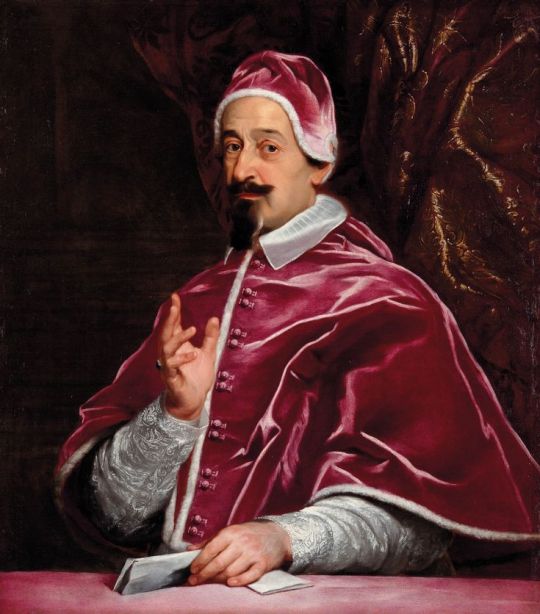
Alessandro VII Chigi - Giovanni Battista Gaulli
#art#portrait#baroque#17th century#italian art#catholic church#cardinal#Chigi family#papal nobility#Giovanni Battista Gaulli
5 notes
·
View notes
Note
Literature characters and their writers as servants (excluding the authors that are already servants
Auguste Maquet-Alessandro di Cagliostro & Edmond
Charles Perrault-bluebeard
Jules Verne-Nemo
Alphonse de Neuville-Nemo
Édouard Riou-Nemo
Joseph Sheridan Le Fanu-Carmilla
Miguel de Cervantes:Don Quixote
Francisco de Robles: Don Quixote
Shi Nai'an-Eliza
Mary shelly: Fran
Percy Bysshe Shelley: Fran
James Lackington: Fran
G. K. Chesterton-Father Brown
Baroness Orczy- Old man in the corner
Jacques Futrelle-Van dusen
R. Austin Freeman-dr Thorndyke
Agatha Christie-Hercule Poirot
Alfred James Dewey-Hercule Poirot
Ellen Edwards-Hercule Poirot
W. Smithson Broadhead-Hercule Poirot
Robert Louis Stevenson-jeykle and Hyde
Washington Irving-The Hessian
F. O. C. Darley-The Hessian
Ernest Thompson Seton-Lobo
Ernest Seton-Thompson-Lobo
H. G. Wells-Jack
Sir Arthur Pearson-Jack
Edward Augustus Arnold-Jack
Xu Zhonglin-Huang Feihu
Lu Xixing-Huang Feihu
Luo Guanzhong-Huang Feihu
Shi Hui-Huang Feihu
Guo Xun-Huang feihu
August Apel: Max
Johann Friedrich Kind: Max
Toku- Fusehime/Tokimura Michi
Matteo Maria Boiardo-Mandricandro
Ludovico Ariosto-Mandricandro
Jean Bodel-Mandricandro
Johann Wolfgang von Goethe-mephistopholes
Christopher Marlowe-Mephistopholes
Wu Cheng'en-Nezha
Thomas d'Urfey-Nursery rhyme
Mary Cooper-Nursery rhyme
Lewis Carroll(pedo)-Alice in wonderland/Jabberwocky
Gaston Leroux-Phantom of the Opera
Edmond Tarbé-Phantom of the Opera
Henry de Pène-Phantom of the Opera
Pierre Lafitte-Phantom of the Opera
Carl Maria von Weber-Phantom of the Opera
Antoine Galland-Most 1001 nights character
Sima Qian-Taigong wang
Francis Grose-doppelganger
Jean Paul-doppelganger
Vyasa-Most Indian servants
Nikolai Gogol-Viy
Sîn-lēqi-unninni-Gilgamesh
Senchán Torpéist-Fionn
Oisín/Fionn's son-Fionn
Caílte mac Rónáin-Fionn
Gilla in Chomded húa Cormaic-Fionn
Gilla Modutu-Fionn
Wolfger von Erla-Siegfried
Nibelungenlied's author-Seigfried
Luo Guanzhong-Lü bu feingxian
Geoffrey of Monmouth-Merlin
Interesting
2 notes
·
View notes
Text

Welcome to my blog! I’m San? SON? Idk I usually go by socially awkward nerd but that name is long—maybe I call myself Sunny or Sans lol— (She/her/they)
Anyways This blog used to be for fanfics about my favorite fictonal characters! :)
Now I have fixation on pjo ocs and Leo Valdez. (3 yrs strong)
Anyways The current fic I'm working on:
El Chispo y La Bruja
Book I: The wrathful awakening of a teenage Bruja (Lost Hero): Prologue, I , II , III, IV, V, VI, VII , VIII , IX , X , XI , XII , XIII, XIV, XV, XVI, XVII, XV….
Update: 3/18/25 more updates to come!!
I hope eventually I might get other obsessions on other movies/tv shows but PJO seems to be winning, if it doesn't change in the next four months then this will become a PJO blog (Am I joking, who knows?)
PSA!!!- None of the characters original story line belong to me - besides Breisa Alessandro and her family, plus her own story--- all credits go to Rick Riordan
©All Oc/new storyline, title rights reserved to dontspillthefrijoles43. No stealing, plagiarism, or copy and paste will not be tolerated!
-This is a safe space for everyone, queer, trans, etc
-No rude, weird, or inappropriate comments
- 18 years old btw
-Willing to take friendly criticism
#Latino fanfic writer#Latino writer#poc writer#latino oc#poc fanfic#fan fic writing#fan fic author#pjo fandom#leo valdez#hoo#heroes of olympus#leo valdez x oc#spanish speaking oc#poc oc#lost hero#pjo tumblr
18 notes
·
View notes
Text
Bernini e il Colonnato: un capolavoro barocco
Il Colonnato progettato da Gian Lorenzo Bernini è la ‘machina heroica’ voluta fortemente da papa Alessandro VII Chigi per accogliere i cristiani e riportare gli eretici verso la fede, come lui stesso scrisse. Quel grande abbraccio di colonne in travertino, sormontate dai 140 Santi che si affacciano si Piazza San Pietro, è uno scenario teatrale. Bernini iniziò a progettare la grande opera nel…
#antonietta bandelloni#art#arte#bellezza#english#giubileo2025#Michelangelo Buonarroti#Roma#scultura#Vaticano
2 notes
·
View notes
Text

Andrea Pozzo - Roma Sant’Ignazio di Loyola - Apoteosi di Sant’Ignazio - 1694
I conflitti religiosi che nel Cinquecento avevano visto una composizione con la Pace di Augusta in cui Carlo V aveva accettato il principio del “cuius regio eius religio” sfociano nel Seicento in due tendenze contrapposte:
- le meraviglie del Barocco e le opere della Controriforma cattolica;
- l’ampio scenario della Guerra dei Trent’Anni.
La Guerra dei Trent’Anni può essere riassunta lungo queste tappe:
- 1594 - Enrico IV Borbone, convertendosi al Cattolicesimo, Re di Francia
- 1598 - Morte di Filippo II
- 1603 - Morte di Elisabetta I
- 1618 - i rappresentanti dell’imperatore cattolico Ferdinando II d’Asburgo, che cerca di creare uno stato moderno, vengono defenestrati dai protestanti boemi
- 1620 - Sacro Macello dei protestanti in Valtellina
- 1624 - Richelieu Primo Ministro
- 1628 - il generale boemo Wallenstein, al servizio degli Asburgo, sconfigge l’esercito danese
- 1631 - il candidato francese al Ducato di Mantova e del Monferrato Carlo I Gonzaga - Nevers prevale, anche grazie all’abilità diplomatica di Mazzarino, sul candidato sostenuto dagli Asburgo di Spagna e dai Savoia dopo la guerra del Monferrato in cui dilaga la peste raccontata nei Promessi Sposi. Nello stesso anno l’Impero saccheggia Magdeburgo, città alleata degli Svedesi
- 1642 - Mazzarino succede a Richelieu
- 1643 - i Francesi, guidate dal Duca d’Enghien (poi Principe di Condè) sconfiggono gli Spagnoli a Rocroi. Luigi XIV Borbone Re di Francia
- 1648 - Pace di Westfalia. Fine del conflitto in cui si profila la leadership francese sull’Europa: gli Asburgo si concentrano sui possedimenti propri (Austria e Ungheria) anziché sull’Impero;
- 1649 - Carlo I Stuart decapitato in Inghilterra
Il Seicento, secolo in Italia di decadenza politica ed economica, è però anche il secolo di Carlo e Federico Borromeo e del Barocco ispirato dalla Controriforma i cui eventi principali sono:
- 1534 - Alessandro Farnese, fratello di Giulia, amante di Alessandro VI Borgia, eletto Papa Paolo III. Approvazione della Compagnia di Gesù
- 1542 - Paolo III istituisce l’Inquisizione
- 1545 - Concilio di Trento: accentramento del potere papale, importanza delle opere e non solo della grazia, formazione del clero, impegno pastorale
- 1566 - Michele Ghislieri eletto Papa Pio V, il Papa che raccoglie la Lega che vince a Lepanto nel 1571
- 1572 - Il bolognese Ugo Boncompagni eletto Papa Gregorio XIII, promotore non solo del calendario gregoriano, ma anche di importanti iniziative religiose, pastorali e culturali. Nel 1580 viene inaugurato il Quirinale
- 1589 - Fontana del Mosè sotto il pontificato di Sisto V che fa erigere obelischi e migliorare il tessuto urbanistico dell’Urbe: è il modello della “Ecclesia triumphans” dopo il contrasto alle eresie dei decenni precedenti
- 1592 - Clemente VIII Aldobrandini Papa
- 1600 - Cappella Contarelli a San Luigi dei Francesi (Caravaggio). Giordano Bruno al rogo a Campo dei Fiori, decapitata Beatrice Cenci
- 1605 - Camillo Borghese eletto Papa Paolo V. Cappella Cerasi in Santa Maria del Popolo (Caravaggio)
- 1612 - Carlo Maderno inaugura la nuova facciata di San Pietro
- 1623 - Maffeo Barberini eletto Papa Urbano VIII
- 1626 - Baldacchino di San Pietro (Bernini)
- 1633 - Abiura di Galileo
- 1651 - grazie alla mediazione di Olimpia Maidalchini, Innocenzo X Pamphili affida al Bernini la Fontana dei Fiumi che completa Piazza Navona
- 1652 - Estasi di Santa Teresa a Santa Maria della Vittoria (Bernini)
- 1655 - Fabio Chigi eletto Papa Alessandro VII
- 1657 - Colonnato di San Pietro (Bernini)
- 1660 - Sant’Ivo alla Sapienza (Borromini)
- 1667 - Oratorio dei Filippini (Borromini), Santa Maria della Pace (Pietro da Cortona)
Terminato lo slancio mecenatistico dei pontefici, l’Apoteosi di Sant’Ignazio con la finta cupola commissionata ad Andrea Pozzo dai Gesuiti segna nel 1694 la fine del Barocco a Roma.
6 notes
·
View notes
Text
Caterina de' Medici, la duchessina
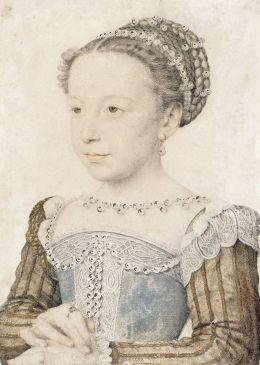
Prima parte
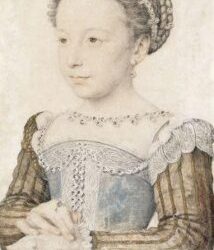
Lorenzo II de' Medici duca di Urbino era a capo della Repubblica di Firenze dal 1516 grazie a suo zio Papa Leone X. Questa posizione di potere lo avvicinò a Francesco I di Francia tanto che il regnante combinò per lui le nozze con la principessa francese Maddalena de La Tour d'Auvergne, contessa di Boulogne. Da questo matrimonio che mescolava il sangue dei Medici con quello dell'alta aristocrazia francese nacque, mercoledì 13 aprile 1519 a Firenze, una bimba a cui fu dato il nome di Caterina Maria Romula de' Medici. Purtroppo la madre morì il 28 aprile di febbre puerperale e poco dopo, il 4 maggio, morì anche Lorenzo, malato da tempo. La bimba fu trasferita a Roma per essere più vicina allo zio Papa Leone X e fu allevata in un primo periodo da sua nonna Alfonsina Orsini. Quando la Orsini morì furono le zie di famiglia Clarice de' Medici e Maria Salviati a proseguire la sua crescita che si accompagnò ai due Medici fuori letto Ippolito e Alessandro. Rimase l'unica erede della famiglia Medici e assunse il titolo di duchessa di Urbino che i fiorentini trasformarono nel nomignolo "duchessina".
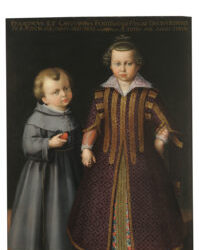
Francesco e Caterina de' Medici Dopo la morte di Papa Leone X ,e le alleanze del nuovo pontefice Adriano VI con gli Asburgo, la piccola Caterina si ritrovò senza il ducato di Urbino. Fu con l'elezione di Clemente VII nel 1523, il cugino Giulio di Caterina, che la "duchessina" assieme ad Alessandro si trasferi a Firenze nel palazzo Medici Riccardi. Clemente VII strinse alleanza nuovamente con i francesi per opporsi all'imperatore Carlo V ma subirono duramente nella battaglia di Pavia tanto che la rivalsa di Carlo V fu tale da arrivare al famoso sacco di Roma il 6 maggio 1527 ad opera dei legionari lanzichenecchi. Allo stesso tempo i fiorentini si scontrarono con il Cardinal Passerini che reggeva il governo imposto dal pontefice. Clemente VII fu quindi costretto a scendere a miti consigli con Carlo V che per proteggere il patrimonio mediceo nella città di Firenze mise la stessa sotto assedio. Caterina era divenuta un ostaggio e passava di monastero in monastero, fu addirittura proposto di esporla nuda sulle mura di Firenze perchè venisse uccisa dai proiettili nemici, o peggio cederla ad un bordello. Per fortuna giunse al monastero delle Murate dove le benedettine se ne presero cura con amore sino a che, terminato l'assedio, Caterina poté ricongiungersi al cugino papa Clemente VII tornando a Roma. Gli anni passarono e Caterina viveva sicura alla corte papale dove il cugino, più preoccupato delle alleanze che di Caterina, cercava per lei uno sposo. Furono vagliati vari candidati, ma durante il vaglio il re di Francia, Francesco I di Valois seppe di questa ricerca matrimoniale e decise di proporre il suo secondogenito Enrico, duca d’Orléans. Clemente VII ne fu entusiasta, i Medici si stavano per imparentarsi con la famiglia reale francese.
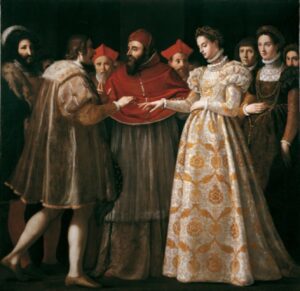
Il 23 ottobre 1533 la tredicenne Caterina de' Medici arrivò a Marsiglia ed incontrò il giovane Enrico di quattordici anni. Le nozze furono celebrate il 28 ottobre e la notte, alla presenza del papa e di Francesco I, il matrimonio fu consumato. Morto Clemente VII dopo appena un anno dalle nozze il nuovo pontefice Paolo III ruppe ogni alleanza e si rifiutò di pagare la doto promessa tanto da far pronunciare a Francesco I la frase: "Ho ricevuto la ragazza tutta nuda". Francesco però si sbagliava, non aveva ricevuto la dote, ma Caterina si dimostrò ricca di quella cultura italiana che cambiò radicalmente le più rozze abitudini francesi, senza parlare della sua azione politica. Caterina infatti divenne una buona amica della sorella di Francesco I, Margherita di Navarra, ed anche delle sorelle del marito, Margherita e Maddalena. Lo stesso Francesco I la prese a benvolere colpito dalla sua cultura ed intelligenza unità ad una modestia ed un affetto incondizionato, tanto da volerla nella cerchia di favoriti. Fine prima parte presto la seconda: Caterina de' Medici, regina madre.

Jacopo Cioni Read the full article
3 notes
·
View notes
Text
Cleopatra non era nera!

La recente rappresentazione di Cleopatra come donna nera in una serie TV ha acceso un dibattito sulla sua reale etnia. È importante sottolineare che le prove storiche suggeriscono con forza che Cleopatra non fosse nera.
Cleopatra VII Filopatore (69 - 30 a.C.), l'ultima regina d'Egitto, apparteneva alla dinastia tolemaica. Questa dinastia fu fondata da Tolomeo I Sotere (305 a.C.), un generale greco di Alessandro Magno che regnò sull'Egitto dopo la sua morte. Tolomeo e i suoi discendenti erano perciò greci e mantennero sempre stretti legami con la cultura ellenistica.
Le monete e le sculture raffiguranti Cleopatra mostrano tratti somatici coerenti con quelli greci, con capelli ricci e naso sottile. Le descrizioni storiche poi non fanno assoluta menzione di caratteristiche subsahariane.
La reppresentazione di figure storiche è un tema fondamentale, che richiede rispetto per la verità e per l'eredità culturale. Modificare arbitrariamente l'etnia di un personaggio rischia di distorcere la storia e di mancare di rispetto alla diverse culture coinvolte.
Nel caso di Cleopatra, il tentativo di dipingerla come nera, al di là di ogni coerenza storica, rischia di oscurare la sua vera identità e le sue straordinarie conquiste come leader e diplomatica. È fondamentale basarsi su prove storiche e archeologiche per rappresentare correttamente le figure del passato, evitando di strumentalizzarle per fini puramente ideologici.
[Nell'immagine: Ellie Goffe per il documentario "Cleopatra: storia di una dea" (2016)].
1 note
·
View note
Text
Alessandro Cortesi OmeliaVII DOMENICA DEL TEMPO ORDINARIO (ANNO C)
Domenica 23 Febbraio (DOMENICA – Verde)VII DOMENICA DEL TEMPO ORDINARIO (ANNO C)1Sam 26,2.7-9.12-13.22-23 Sal 102 1Cor 15,45-49 Lc 6,27-38 Un gesto e alcune parole segnano la liturgia di oggi. Il gesto di Davide innanzitutto: esso non segue la via della vendetta. Davide non uccide Saul che lo inseguiva nel deserto. Sceglie invece di non mettere le mani sul re, consacrato del Signore.…
#Commenti al Vangelo#OMELIE#Vangelo#Vangelo di Domenica prossima#VII Domenica del Tempo Ordinario (Anno C)
0 notes
Text
Il tumulo della Cuccumella a Vulci
di Michele Zazzi Il tumulo della Cuccumella a Vulci Nella Necropoli Orientale di Vulci si staglia il monumentale tumulo della Cuccumella, databile alla fine del VII secolo a.C., di circa 70 m di diametro, 230 m di circonferenza e 20 m di altezza. Il tumulo fu oggetto di scavi dal 1828 ad opera del Principe di Canino Luciano Bonaparte, successivamente da parte di Alessandro François e poi da…

View On WordPress
0 notes
Text
Anziana uccisa in casa nel Foggiano, sarà lutto cittadino
Nel giorno dei funerali. Carabinieri al lavoro su dinamica Anziana uccisa in casa nel Foggiano, sarà lutto cittadino Prossima pubblicazione on-line (autore: Alessandro Corbelli) (Digital News 24) 26/05/2024 Alessandro Corbelli annuncia in diretta YouTube la prossima messa in onda del video audibile: “La bambina venduta” (VII capitolo) – Mattarella, la sua colpa e…

View On WordPress
0 notes
Video
youtube
TOCCATA VII by Alessandro Piccinini (1566-1638) Intavolatura di chitarrone.
0 notes
Text
Presepe Monumentale 2023 a Città della Pieve

Come ogni anno è molto atteso l’evento clou del Natale di Città della Pieve, nel cuore dell’Umbria, che è il Presepe Monumentale del Terziere Castello, giunto alla 57a edizione, un percorso visitabile dal 25 dicembre al 7 gennaio che combina creatività e tradizione secolare del presepe umbro. Molto particolare anche il Calendario dell’Avvento Luminoso realizzato dal Terziere Casalino che, tutte le sere alle 18 e fino al 24 dicembre, vedrà nella piazzetta del pozzo le finestre luminose aprirsi e svelare la loro storia. Inoltre nei weekend sarà possibile gustare le prelibatezze del Ristoro dell’Elfo e divertirsi con il Ludobus e in Via Vittorio Veneto ci saranno come ogni anno i Mercatini di Natale a cura dell’Associazione Città della Pieve Promotion, oltre tanto intrattenimento per grandi e piccoli con spettacoli teatrali a tema, musical, laboratori e spettacoli di magia. Pur sviluppatasi dall’età medievale, Città della Pieve conobbe senz’altro la presenza umana almeno sin dall’epoca etrusca, confermata da numerosi rinvenimenti archeologici.. In epoca romana, il colle dove sorge il borgo fu noto come Monte di Apollo, per la presenza di un tempio dedicato al dio del Sole. Le prime origini della futura Città della Pieve come centro abitato risalgono, tuttavia, al VII secolo d.C., quando cadde sotto la dominazione dei Longobardi, che fortificarono il colle, posto ai confini del Ducato di Tuscia, in funzione di avvistamento della città di Perugia. Nel centro fortificato fu realizzata una chiesa intitolata ai Santi Gervasio e Protasio, martiri assai venerati presso i Longobardi. Il piccolo castrum conobbe poi un sensibile incremento demografico e, attorno all’anno Mille, sotto l’egida di Perugia, fu munito di una cinta muraria ed elevato a castello, assumendo il nome di Castel della Pieve. Nei decenni il borgo crebbe ulteriormente, grazie allo sviluppo dei commerci e delle attività economiche, fra cui la produzione del laterizio e la lavorazione del ferro battuto, nonché di un tessuto assai pregiato e ricercato come il panno cremisi. Nel 1188, Castel della Pieve cadde sotto la dominazione di Perugia, che la pose a controllo del Chiugi e nel 1228, approfittando del conflitto scoppiato fra le truppe imperiali e senesi e le città di Orvieto e Perugia, il borgo si ribellò, proclamandosi libero comune sotto la protezione dell’imperatore Federico II di Svevia. Perugia nel 1250, dopo la morte di Federico II, riprese il comando del borgo e, per evitare una nuova ribellione, il governo vietò che Castel della Pieve potesse ulteriormente espandersi perché non diventasse ancor più potente. Tra il 1448 ed il 1450, nacque a Castel della Pieve Pietro Vannucci, noto come il Perugino, fra i più celebri artisti del Rinascimento italiano, di alcune delle cui opere si sarebbe arricchita anche la sua città natia. Nel 1529 papa Clemente VII pose Castel della Pieve sotto il controllo pontificio e, nel 1600, il castello fu elevato da papa Clemente VIII a Città, così il toponimo divenne Città di Castel della Pieve, che a breve, per e per l’eccessiva somiglianza con Città di Castello, divenne Città della Pieve. Sul finire della prima metà del XVII secolo, le ambizioni di dominio da parte di papa Urbano VIII sul Ducato di Castro condussero ad un conflitto che coinvolse anche Città della Pieve. Nel 1643 il borgo, difeso da un piccolo contingente papale comandato da Frizza Napolitano, fu espugnato dall’esercito toscano, guidato dal principe Mattias de’ Medici e dal condottiero aretino Alessandro Dal Borro. L’occupazione toscana durò oltre un anno, fino a quando Città della Pieve non tornò nel dominio pontificio. Da allora rilevanti interventi architettonici e la bonifica della Val di Chiana impressero a Città della Pieve l’aspetto odierno, nel quale, in un impianto urbanistico di origine medioevale, si sono alternati tesori rinascimentali, barocchi, manieristi, rococò e neoclassici tutti da scoprire. Read the full article
0 notes
Text
Impianto di teleradiodiffusione, vincoli paesaggistico-architettonici e legittimità dell'ordine di ripristino. Il Consiglio di Stato conferma le nostre tesi.
Consiglio di Stato, Sez. VII, Pres. Lipari, Est. Contessa, sent. 3 novembre 2023, n. 9486. Soc. XY (Avv. Alvilio Presutti, Felice Vaccaro) contro Comune di Fiesole (Avv. Alessandro Biamonte). 1. Il destinatario della misura di ripristino può prescindere all’accertamento in ordine alla materiale individuazione del responsabile dell’abuso, considerato che esso non si identifica solo con colui che…

View On WordPress
#compatibilità paesaggistica#impianto teleradio#ordine di ripristino#radiodiffusione#stazione radio base#vincolo paesaggistico
0 notes
Text
Giubileo 2025: l'esercito di Santi che sorveglia Piazza San Pietro
Già a partire dal 1655, anno in cui si iniziò a costruire il grandioso abbraccio di colonne progettato da Bernini, papa Alessandro VII Chigi avrebbe voluto che il portico della Basilica di San Pietro venisse coronato da sculture che raffigurassero Santi, martiri ma anche papi illustri, vescovi che avevano lasciato un segno nella storia, eremiti e fondatori di ordini religiosi. In quel momento la…
#antonietta bandelloni#artblogger#arte#artinfluencer#bellezza#capolavoro#english#giubileo2025#Michelangelo Buonarroti#Roma#Vaticano
0 notes